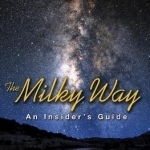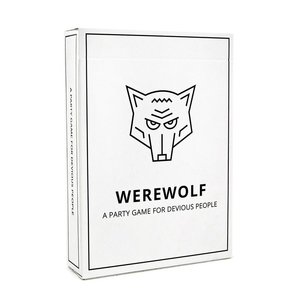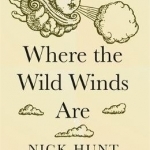
The Milky Way: An Insider's Guide
Book
This book offers an intimate guide to the Milky Way, taking readers on a grand tour of our home...

First Love (2019)
Movie Watch
First Love (2019) Toronto International Film Festival Never mind a New York minute: it's in a...
Miike First love Japanese

NightCap Camera
Photo & Video and Utilities
App
NightCap Camera is a powerful app that takes amazing low light and night photos, videos and 4K time...

Baby Night Light HD
Lifestyle and Entertainment
App
Baby Nightlight is a magical app that lights up in the dark and gives off soft and comforting light...

Camera360 - Selfie Sticker Cam
Photo & Video and Entertainment
App
Camera360 is an all-in-one selfie, beauty camera app and a global community of selfie challenge with...
Purple Phoenix Games (2266 KP) rated Werewolf: A Party Game for Devious People in Tabletop Games
Jun 24, 2021
Disclaimer: We were provided with a copy of this game for the purposes for this review. What you see is a finalized production copy, and is what would be received in a retail copy. -L
Werewolf: A Party Game for Devious People (simply referred to as Werewolf from here on out), is a game of bluffing and deduction in which players are attempting to complete their objective, based on their secret roles. Werewolves are trying to outnumber the Villagers, and Villagers are trying to kill all the Werewolves. To setup for a game, assemble the deck of role cards. Each deck will always have 1 Moderator card, a number of Werewolf cards, and a number of Villager cards depended on the player count. For example, a 5-player game would have 1 Moderator, 1 Werewolf, and 3 Villagers. Each player is dealt one card and keeps their role a secret, except the Moderator. The game is now ready to begin.
Each round consists of a Night and Day phase, all facilitated by the Moderator. To start the Night phase, all players (except for the Moderator) will close their eyes. The Moderator prompts the Werewolf to awaken (open eyes) and silently point to a Villager to kill. The Werewolf then closes their eyes, and the Night phase ends. To start the Day phase, the Moderator will have all players open their eyes, and will reveal which player has been killed in the night. All remaining ‘living’ players now have a chance to discuss amongst themselves and try to figure out the identity of the Werewolf. Accused players have a chance to defend themselves, and may even throw the blame to other players. Once players reach a consensus, they will kill off the accused Werewolf. If the accused player was the Werewolf, then the Villagers win (in a 5-player game)! If the accused player was not the Werewolf, then a new round begins with a Night phase, and the Werewolf is one step closer to winning. The game ends when either the Villagers have killed the Werewolf, or the Werewolf equals or outnumbers the Villagers.
The above description is a generic rundown of the game. Many versions of Werewolf have additional roles/abilities to enhance the gameplay and add new elements to the strategy. This particular version of Werewolf does indeed include optional additional roles. Those roles are: Seer, Doctor, Drunk, Witch, and Alpha Werewolf. These optional roles grant players additional abilities/powers for use during play. For example, every Night phase, the Seer can silently ask the Moderator whether a single player is a Werewolf or not. That can definitely help in the Day phase when it is time to accuse people! The addition of these roles helps to enhance the strategic gameplay by offering more for players to do, rather than just blindly accuse and guess each round. Included in the tuck box are even some blank role cards for you to create your own roles/powers if you so choose.
The major downside to any version of Werewolf is that once a player has been killed off, if they were not the Werewolf, they are out of the game for good. So even if the game lasts for 20 more minutes, that player just has to sit there in silence.
Components. This particular Werewolf consists of a deck of role cards, rules, and a guide for the Moderator. The quality of the cards is nice, and they are easy to manipulate and are sturdy. The artwork is very minimalistic in this game, and it actually works pretty well since Werewolf really isn’t a component-based game. All in all, a good quality deck of cards.
Overall, this is just a normal game of Werewolf. Honestly, you don’t really even need any components to play – as long as everyone knows the rules and roles, you are good to go. Does having a deck of cards help? In some ways, yes. But it kind of just feels redundant to me, since I already knew how to play the game. If you’re wanting to introduce someone to the Werewolf-type game, this little deck of cards would be a good way to do it. Personally, this type of game appealed to me more as a child/teen, and it kind of falls flat to me now as an adult, thus my low score. I don’t see this game staying in my collection forever, but it had a decent run while it was here. Purple Phoenix Games gives it a calculated 4 / 12. If you’ve played any variation of Werewolf before, there’s really no need to check out this particular iteration.

LExp - Long Exposure Calcs
Photo & Video and Utilities
App
LExp or Long Exposure Calculators is a must-have app for any landscape photographer who is shooting...

My Talking Hank
Games and Entertainment
App
With over 5 BILLION downloads and worldwide hits like My Talking Tom and My Talking Angela, Talking...
Hazel (1853 KP) rated Where the Wild Winds are: Walking Europe's Winds from the Pennines to Provence in Books
Sep 26, 2017
From the moment the great storm of 1987 almost blew six-year-old Nick Hunt away, he has had the urge to travel. So many travel books are on the market, it is difficult to produce something new and exciting, but after coming across an interesting map of Europe, Hunt was determined to go on a journey that not many have attempted before. With a map listing the named winds of Europe, Hunt sets off on a quixotic quest to follow the winds.
Beginning in the Pennine Mountains, Nick Hunt takes the reader on a personal journey through the continent as he explores the towns and valleys the winds flow through whilst hoping the elusive tempests will occur so that he can experience them himself. With a mix of euphoria and disappointment, Hunt details his arduous journey providing additional knowledge along the way.
Some winds are more evanescent than others – one, discouragingly, not appearing at all – whereas one is so strong, Hunt witnesses a waterfall being blown upwards. Ignoring the warnings of the locals, Hunt, dead set on completing what he intended to do, takes us on a long walk from Italy to Croatia, a trek through the Alpine valleys of Switzerland, and a final expedition to the south of France.
Wind may seem like an odd topic to write a book about, but the Helm, Bora, Foehn and Mistral are no ordinary breezes. Their violence makes Hunt’s journey a dangerous and daring endeavour and is full of stories about past disasters that have occurred as a result of the strong, temperamental weather.
As well as teaching us about these four winds, Nick Hunt has collected facts and stories about the general areas he passes through. Personal stories of the inhabitants break up Hunt’s narrative, however, myths, legends, history and superstitions frequent the lengthy chapters as much as the winds themselves.
Giving wind a name provides it with a personality, as though it is something tangible that can be met and observed. Nick Hunt notes that artists such as Turner and Constable were interested in the weather and fascinated by the effects the wind had on the surrounding landscape. Another artist that was affected by the weather was Vincent Van Gogh - some of his paintings took place in France in the midst of the powerful Mistral. Just as the wind can be seen in his starry night skies, the scenery in France is evocative of a Van Gogh painting.
The winds do not only affect the lands they blow through, they have a strong impact on the wellbeing of the inhabitants. Some experience physical symptoms such as headaches, nose bleeds, dry skin and so forth, whereas others find themselves growing irritable, depressed and confused. The author himself has the opportunity to undergo the effects of these winds. Hunt also puts forward the suggestion that Van Gogh’s deteriorating mental health was a direct consequence of residing in the path of the Mistral.
From witchcraft to the Greek god Aeolus, there are a number of theories about why these strong winds blow. There are, of course, meteorological explanations, which Hunt attempts to explain, but admits he finds it as baffling as the next person. Regardless of the reason, these winds exist and it is captivating to learn about this aspect of Europe.
Where the Wild Winds Are: Walking Europe’s Winds from the Pennines to Provence is a fantastic, beautifully written book. Nick Hunt’s narrative is so personal that it becomes more than a travel documentation or informative non-fiction. As we read, we really get a sense of the emotions and physical hardship Hunt experienced, yet, at the same time, learn so much about European culture as well as, of course, Europe’s winds. Whether or not you are interested in travelling, this book will take you on a journey you will never forget.
From the moment the great storm of 1987 almost blew six-year-old Nick Hunt away, he has had the urge to travel. So many travel books are on the market, it is difficult to produce something new and exciting, but after coming across an interesting map of Europe, Hunt was determined to go on a journey that not many have attempted before. With a map listing the named winds of Europe, Hunt sets off on a quixotic quest to follow the winds.
Beginning in the Pennine Mountains, Nick Hunt takes the reader on a personal journey through the continent as he explores the towns and valleys the winds flow through whilst hoping the elusive tempests will occur so that he can experience them himself. With a mix of euphoria and disappointment, Hunt details his arduous journey providing additional knowledge along the way.
Some winds are more evanescent than others – one, discouragingly, not appearing at all – whereas one is so strong, Hunt witnesses a waterfall being blown upwards. Ignoring the warnings of the locals, Hunt, dead set on completing what he intended to do, takes us on a long walk from Italy to Croatia, a trek through the Alpine valleys of Switzerland, and a final expedition to the south of France.
Wind may seem like an odd topic to write a book about, but the Helm, Bora, Foehn and Mistral are no ordinary breezes. Their violence makes Hunt’s journey a dangerous and daring endeavour and is full of stories about past disasters that have occurred as a result of the strong, temperamental weather.
As well as teaching us about these four winds, Nick Hunt has collected facts and stories about the general areas he passes through. Personal stories of the inhabitants break up Hunt’s narrative, however, myths, legends, history and superstitions frequent the lengthy chapters as much as the winds themselves.
Giving wind a name provides it with a personality, as though it is something tangible that can be met and observed. Nick Hunt notes that artists such as Turner and Constable were interested in the weather and fascinated by the effects the wind had on the surrounding landscape. Another artist that was affected by the weather was Vincent Van Gogh - some of his paintings took place in France in the midst of the powerful Mistral. Just as the wind can be seen in his starry night skies, the scenery in France is evocative of a Van Gogh painting.
The winds do not only affect the lands they blow through, they have a strong impact on the wellbeing of the inhabitants. Some experience physical symptoms such as headaches, nose bleeds, dry skin and so forth, whereas others find themselves growing irritable, depressed and confused. The author himself has the opportunity to undergo the effects of these winds. Hunt also puts forward the suggestion that Van Gogh’s deteriorating mental health was a direct consequence of residing in the path of the Mistral.
From witchcraft to the Greek god Aeolus, there are a number of theories about why these strong winds blow. There are, of course, meteorological explanations, which Hunt attempts to explain, but admits he finds it as baffling as the next person. Regardless of the reason, these winds exist and it is captivating to learn about this aspect of Europe.
<i>Where the Wild Winds Are: Walking Europe’s Winds from the Pennines to Provence</i> is a fantastic, beautifully written book. Nick Hunt’s narrative is so personal that it becomes more than a travel documentation or informative non-fiction. As we read, we really get a sense of the emotions and physical hardship Hunt experienced, yet, at the same time, learn so much about European culture as well as, of course, Europe’s winds. Whether or not you are interested in travelling, this book will take you on a journey you will never forget.

